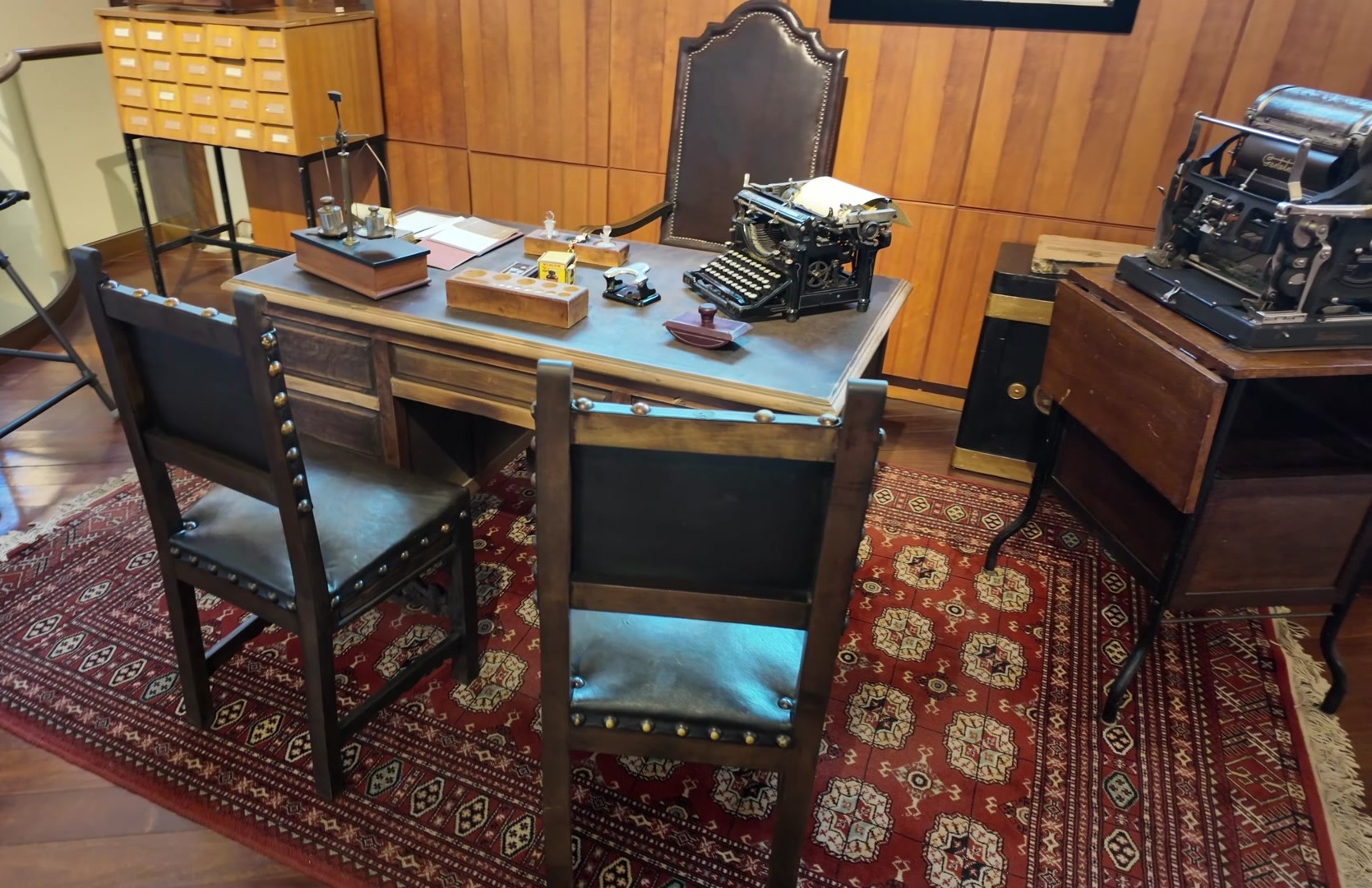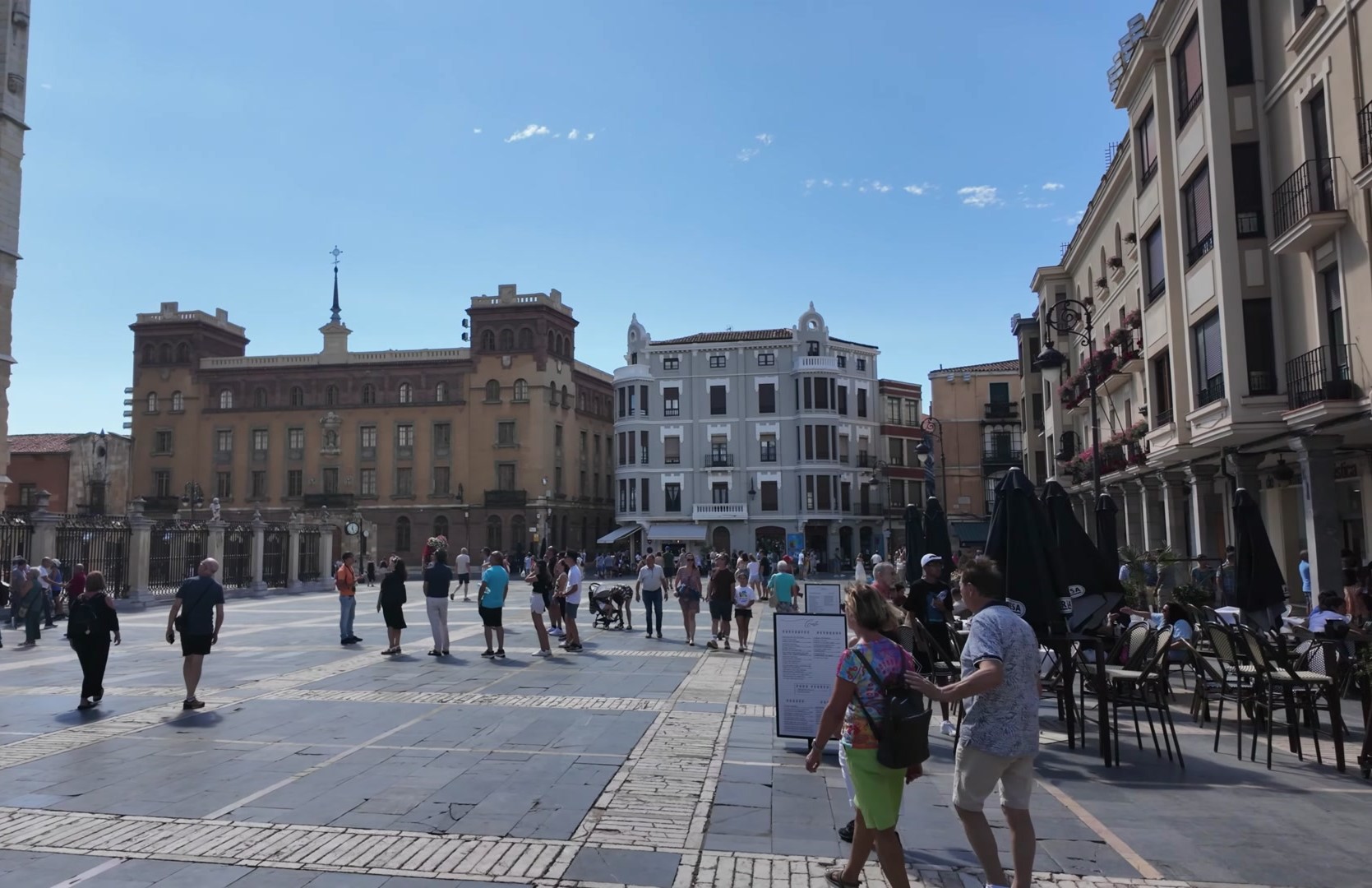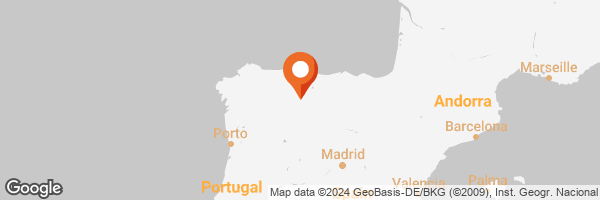
Hello friends. I want to share our trip to León with you. This is a city located in the north of Spain's Castile and León autonomous region. By the way apart from the similarity in name it has no connection to Lyon in France. I’ve been to Lyon before as well. We started our tour of the city at the main square, Plaza Mayor. Almost every Spanish city has a Plaza Mayor, but they are unique to each place. In the past bullfights were held in nearly all Plaza Mayors. But these were later moved to specialized arenas. However, various markets are still held in these squares on weekends. Meanwhile the square's architecture has retained its original form, featuring balconies surrounding it and an impressive town hall with a clock tower.





It’s worth mentioning that the name of the city León, is derived from the Latin word legio meaning Roman legion. Thanks to the victory of a Roman legion, the city was established here in the 20s bc. And León is situated on the Camino de Santiago or the Way of Saint James, a route that extends to Santiago de Compostela.

Visitors to León must see the León Cathedral. This cathedral is considered one of the most beautiful Gothic cathedrals in Spain and this is absolutely true. Its exterior and interior architecture are both stunning. Inside you’ll find marble and stone carvings, intricately decorated pulpits and intricately crafted seats that are almost like works of art. However, one of its most striking features is the countless stained-glass windows. These windows adorn every facade of the cathedral and are truly mesmerizing. If you ever visit, I highly recommend it.

As for the cathedral's history, like many other religious structures in Spain it has a long past. Construction began in the 10th century and lasted approximately 400 years. What’s remarkable is the preservation of a single architectural style throughout. Everything here maintains a cohesive Gothic design. The long construction period is evident in the two towers, which are of different heights and shapes because they were built about 100 years apart.







It’s worth noting that not much remains from the Roman era in León. While saying nothing remains wouldn’t be entirely accurate. There is a commemorative column dedicated to Roman legionaries. However, it appears to be a modern creation. Later, Christians built the magnificent cathedral. Before that the Visigoths and then the Muslims ruled this region. Eventually the Christians regained control. In fact, the Reconquista began in these lands, specifically from Covadonga, a bit further north.


Another structure we saw was the Basilica of San Isidoro. Much older than the cathedral, this temple’s construction began in the 6th century. Built in the Romanesque style, it is dedicated to Saint Isidore. Who is Saint Isidore? He was the Bishop of Seville. Christians brought his relics here and built this temple. It is considered one of the oldest Christian temples in León and holds significant historical importance.



Speaking of a legend associated with Saint Isidore, a severe drought struck in the 10th century and people prayed to Saint Isidore for rain. After the rain fell, a tradition began where the mayor gifted a large candle to the bishop on the second Sunday after Easter. When the bishop accepted the gift, he would say "This is your debt to Saint Isidore for the blessing he has given us." The mayor would reply "No. this is merely our gratitude." This debate was immortalized in a statue and the tradition continues to this day. If you can’t visit on the second Sunday after Easter, you can see the statue and learn about the story.

Right behind the Basilica of San Isidoro stands the Royal Collegiate Church, a place that hosted one of the earliest parliamentary meetings in Europe. This meeting was convened by Alfonso, the King of Asturias, Galicia and León. The church is regarded as the cradle of European parliamentarianism. Today a hotel occupies this historic site. You can stay here to immerse yourself in history or simply visit its courtyard for a coffee.



Afterward we strolled along Calle Ancha, a pedestrian street that is one of the city's main tourist attractions.

Here you might be surprised to find a building designed by Antonio Gaudí. This building, Casa Botines, was constructed for a Catalan textile entrepreneur and served both commercial and residential purposes. The ground floor houses exhibition spaces, while the upper floors contain apartments.

When Gaudí designed this house, he was not even 40 years old and this was his first multi-story residential project. Above the entrance is a statue depicting Saint George slaying a dragon, earning the building the nickname "The House of the Dragon". Interestingly Gaudí himself underwent a spiritual transformation during the time he worked on this project.

This architecturally innovative building featured bold designs for its time. For example, Gaudí replaced load-bearing walls with slender cast-iron columns on the ground floor to create an open exhibition area. Today, the exhibition space has been reconstructed to display period textile collections, an accountant's desk and customer meeting areas.

The upper floors recreate the atmosphere of a lavish apartment belonging to the entrepreneur. The living room, dining room, kitchen, bathrooms and children's rooms were considered modern for the late 19th century. There's even a room with a small sewing machine, which could have been used by the servants or as a testing area for textile products.

This story sparks the imagination and visiting the site promises to be an inspiring experience. The upper floors also house an impressive art collection, particularly a gallery rich in paintings. Among the highlights are illustrations of The Divine Comedy by the renowned Catalan artist Salvador Dalí. Dalí's exhibition is a must-see for art lovers.



It’s worth noting that the building only recently opened to visitors. Closed until 2017 it was restored extensively and now serves as a museum. Visitors can admire not only the historical building but also the collections it houses. Surrounding the building is the beautiful Plaza de San Marcelo, a square with a rich historic ambiance. Nearby you’ll find significant structures like 15th-century government buildings.



Another enjoyable part of León was the Barrio Húmedo area. Starting from Plaza Mayor, this district is famous for its numerous bars, restaurants and tapas spots. It is the heart of the city’s nightlife.




Modern architecture and contemporary art also play an important role in León. The Castilla y León Museum of Contemporary Art (MUSAC) is a notable example. Its colorful glass facade, inspired by the stained glass windows of León Cathedral, makes it a striking structure. Inside, the minimalist concrete aesthetic dominates, with sections of varying heights and open courtyards providing a unique space.

The museum's art collections are equally fascinating. The permanent exhibit, Epilogue, reflects on the evolution of human history and its ultimate destiny. Another section focuses on the emotional and decorative aspects of color. Two works by Swiss artist Pipilotti Rist stand out. One, Apple Tree, is a video installation highlighting the relationship between nature and technology. The other, a meditative video blending human and nature imagery, offers visitors the chance to experience it while lying on specially designed chairs.









We concluded our visit to León with the Monastery of San Marcos. This stunning structure is a remarkable example of Plateresque architecture. While some experts point out its Late Gothic features, it is often seen as a blend of both styles. Historically this building served as a women's monastery and a hospice, making it an early prototype of the modern hotel concept.



On the Camino de Santiago - Way of St. James, a pilgrim statue in the monastery reflects the spirit and tradition of pilgrimage. Today this historical landmark operates as a five-star hotel and is part of the Paradores chain, a network of luxury accommodations in Spain’s historic buildings like monasteries, castles and churches.

Another highlight of our León visit was the gastronomy. One of the most notable restaurants is Cocina Ares, a Michelin-starred venue that presents regional cuisine with a modern twist. The menu includes Cantabrian anchovies, grilled vegetables, monkfish and lamb, a traditional dish of Castilla y León. The lamb, in particular is a feast for the senses with its exquisite presentation and flavor. Although the prices are high, the experience is worth it.


León’s gastronomic scene extends far beyond this, with numerous local eateries serving traditional dishes. This makes León a paradise for food enthusiasts, where tapas, various meat dishes and fresh seafood are particularly popular.

Adding to León’s lively atmosphere is its student population. The city’s university, established in 1979, is one of Spain’s and Europe’s youngest. With 13,000 students in a city of 130,000, the energy and vibrancy are palpable in every corner.

León is truly an impressive city, blending historic and modern structures, rich cuisine and a dynamic atmosphere. I hope this journey has inspired you. Don’t forget to visit this city if you ever have the chance. See you at our next destination. 😊


